The title samurai, literally meaning 'attendant' stems from the Japanese verb samurau or "to serve" , referred to these court administrators who would later become guards. Once the 12th century came around, there were more incentives for military service in Japan and this is when samurai came to be known more widely[1].Later on in the Edo Period the samurai were given rankings. In ascending order, they are:
- Gokenin or "housemen". They were the lowest ranked by the feudal leader which they served.
- Goshi or "rustic warrior". They could farm the land but were not considered a full fledged samurai.
- Hatamato or "bannermen". They had the highest rank and were expected to die in battle[2].
Research your ancestors on MyHeritage
Origins of samuraiOrigins of samurai
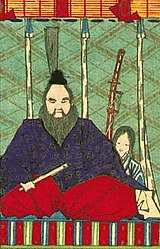
The origins of the word samurai date back to A.D. 702. At this point in time, there was a different definition of samurai then the one known in today's 21st century popular culture. In the early 8th century they were known as a sort of civil servant that were usually low-to-mid ranking court administrators.
Evolution of SamuraiEvolution of Samurai
The first samurai arrived in Japan in 1185. The kamakura shogunate was really the first time that the samurai became active. They ruled from 1185-1333.
By the late 11th century the first samurai led government rose to power in Japan for the first time in history. This government was led by the Tairo clan, one of the two main clans battling for power. The Tairo and Minamoto clans were the most powerful clans in Japan at the time. However, the Yamato clan was the first to unify rival clans. They ruled Japan as its first emperors[3].
The main weapon that the samurai used during fighting was a sword called a Katana. The main governing body or form of government to which the samurai followed was feudalism. The leadership of this particular system was known as a Daimyo. One of the main reasons that the samurai connected to this particular governmental system was due to political circumstance. During the seventh century there were Japanese government reforms that led to land redistribution and higher taxes.
Kamakura periodKamakura period
Kamakura, which is a little over fifty three kilometers southwest of Tokyo, became the center of political power during the 12th and 13th centuries. It's here where many temples were built. These temples were built in the style of Zen Budhism. The reason they were built in this style is that this was the religion of the warrior class - such as samurai - at that time.
List of Notable Kamakura TemplesList of Notable Kamakura Temples
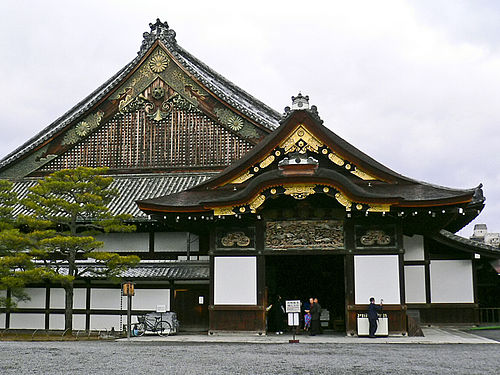
- DatoKu-Ji Temple - Built in 1502, it's located in northwest Kyotoand consists of over twenty sub-temples.
- Nijo Castle - Built in 1603, this was built by Tokugawa; the shogun who founded the Edo empire. It's also located in Kyoto. It was built overlooking the imperial palace to symbolize a growing power over the emperor.
- Meigetsu-in - Built in 1160, it's also known as the "Bright Moon Temple" since there are many rabbits there. In Japanese tradition rabbits are associated with the moon[4]. It's also known as the " Hydrangea Temple" due to all of its ( hydrangea) flowers. It was originally built as a religious retreat. This temple is of great significance to samurai history since it was closed at the beginning of the Meiji period and also during a power struggle between two clans ; the Taira and Minamoto clans. During this time period thousands of Buddhist religious temples and shrines were destroyed[5].
Notable time periods in samurai historyNotable time periods in samurai history
The genpei warThe genpei war
The Genpei War (1180-1185) was a defining point in time for samurai. During this war between the Minamoto and Tairo clans, the Minamoto were triumphant and gained control. Other important time periods were the Warring States period and the Meiji period.
The genpei wars effect on samuraiThe genpei wars effect on samurai
The outcome of the war changed the definition of a Shogun from a leader to a dictator. The first shogun to lead Japan was Minamoto Yoritomo. His modern day ancestors are members of the Shimazu clan. It established the code of conduct for samurai; laid the foundations for how they operated in battle, raised standards of conduct in their personal lives and brought new understandings of culture - such as art and poetry - to light[6].
Warring states periodWarring states period
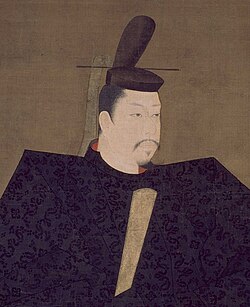
Warring States Period (1467 - 1590)- This was another important time period in samurai history and is also known as the Sengoku Period. This was a period in which samurai were fighting samurai. Depending on ones clan, different names were given, which had different meanings. For instance, the Minamoto had different names and meanings in comparison to the Taichibara or the Taira. Examples of clan names and their corresponding meanings include[7]:
- Yori / Yoshi - This is typical of the Minamoto clan
- Nobu - This was common to the Oda clan.
Meiji PeriodMeiji Period

This was a time period of major change in Japan. One person who was instrumental in the changes during this time was Mutsuhito Meiji- Tenno(1852-1912). He was the 122nd emperor of Japan and also known as "Emperor Meiji". The name "Meiji" comes from two Kanji words, mei meaning "bright" or "enlightened" and ji meaning "govern" or "rule" [8]. Some changes during this period included modernization through change such as agricultural, transportation and communication changes. Examples of this include:
- The first telegraph between Tokyo and Yokohama.
- The Tomioka Silk Mill - This was a mill that had almost 300 silk reeling machines in operation. These were imported from France and were the newest and most modern designs of the time[9].
- Japans ports were forced open, whereas previously it was known as a "closed" country.
- The end of the feudal/ daimyo rulership style.
Popular samurai names in japanPopular samurai names in japan
Most commoners during the time samurai were active did not have surnames, instead, surnames were mainly left to the aristocracy and to samurai. Its important to also remember that samurai were born into their class; prestige in one's ancestry and lineage are just as important as ones words or deeds.
Japanese naming conventionsJapanese naming conventions

Often the structure of names in Japan had a specific order and reasoning to them. Prior to the Meiji period names were conveyed from one person to another with surname first and given name last. During and after this important time period in Japan it was the opposite. Additionally, names were ordered or altered in a specific way for one of the following reasons:
- The name indicates a particular geographic or physical place. Examples of this include:
- Ta-naka means " center of the body" or Hon-da, meaning "original paddy" . A famous example of this was Kane Tanaka who passed away in 2022; she was, while alive, one of the oldest living people in the world.
- A member of the clergy or other religious figure. An example of this is:
- Amago Tsunehisa (1458-1541). He was a powerful warlord during the Sengoku period. His parents died at an early age. Since he an orphan, was raised by nuns. Later on in life he changed his name from Amago to Amaco. "Ama" literally means nun and "ko" means son, so Amaco Tsunehisa means Tsunehisa of the nuns.
Samurai naming conventionsSamurai naming conventions
Modern-day SamuraiModern-day Samurai
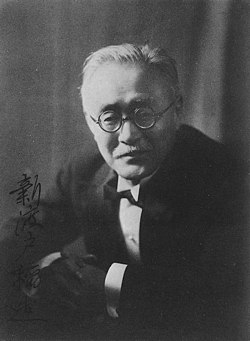
Japan is considered by some to be a peaceful society in that it's not actively at war with any other countries. Additionally, while actual samurai are not around today the concept or frame of mind known as Bushido is still around today.
The Bushido were eight principles guiding a samurai conduct and were established by Inazo Nitobe. Nitobe was a Japanese diplomat, politician and writer. This was a code of conduct of still infused in modern-day Japan which basically emphasized the following points:
- Frugal living, honesty, kindness and personal honor as high valuable.
- The samurai lord above all else; even if this means going against ones parents and breaking the law.
- Justice above everything; this being the most important of the seven Bushido principles.
Samurai todaySamurai today
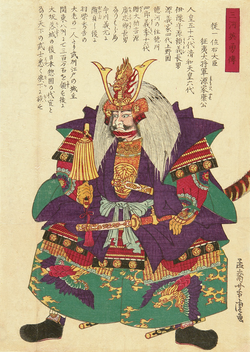
In present-day Japan we can see descendants of samurai in the following clans:
- Imperial Clan - Perhaps one of the most notable living descendants of samurai , it's members make up the leaders of the current Japanese government. Emperor Naruhito who took the throne in 2019 is a descendent of the imperial clan. He can trace his lineage back to Jimmu, the first emperor of Japan and the founder of the Imperial clan.
- Shimazu Clan - The current head of the Shimazu clan is Nobuhisa Shimazu. He's the President of a tourism company. They are one of the most famous and oldest warrior clans[10].
- Oda Clan - Literally meaning " great field" in Japanese, the family members from this clan that are alive today include Oda Nobunari; formerly a famous competitive figure skater.
- https://lastnames.myheritage.com/last-name/Abe Abe Clan] - This is one of the oldest of the major Japanese clans.
- Date Clan - They controlled parts of northern Japan in the late 16th century as well as during the Edo Period. Tokugawa- This clan produced family members who ruled Japan between 1603 and 1868. One notable living family member is Tokugawa Tsunenari. He is an 18th generation member of the Tokugawa family; the leaders of the Tokugawa Shogunate.
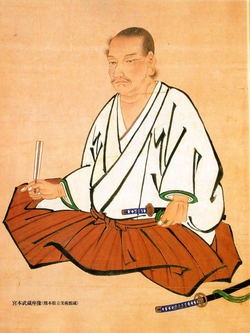
Finally, while there are many samurai names to choose from, certain ones standout due to their achievements and historical importance. A few of these include:
- Musashi - This is after Miyamoto Musashi. He lived during the Edo period and was a descendant of the Hirata clan. He was known as a a good strategist and swordsman.
- Nobunaga - This is after Odu Nobunaaga. He was a samurai that lived during the and was a descendant of the Hirata clan.
- Hideyoshi- He was a famous warrior from the 16th century. He ruled during the late Sengoku period. He is considered the second great unifier of Japan.
Noble clansNoble clans
See also Kuge
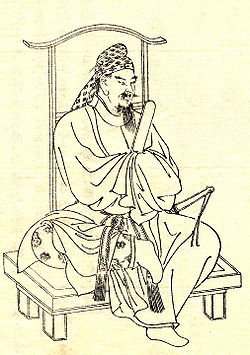
There are four main noble clans in Japan. They are as follows:
- Fujiwara - This was a clan founded by Fujiwara no Kamatari that dominated the Japanese government for almost four hundred years from the 9th- 12th century. They primarily came to power through the relationships established via marriage; specifically through the intermarriage of Fujiwara daughters to emperors. They are considered an aristocratic Japanese family. This is a popular modern name in Japan and is ranked 67th in popularity.
- Tachibana - While they were one of the most powerful clans during the Edo and Senkogo periods, they were ultimately over-powered by the Fujiwara family.
- Taira / Kanman Heishi - Once a feudal government was established, the Heikie clan - originally part of the Heishi clan - seized power from the Heishi clan in Kyoto. Some families such as the Hojo and Miura families were not nobles but were part of the Heishi clan and so the places in which they settled were ultimately named after them[11].
- Minamoto/ Genji - This was made up of 21 members of the Imperial Japanese household.
See alsoSee also
Explore more about Samurai genealogyExplore more about Samurai genealogy
- Japanese American Research at Legacy Family Tree webinars.
- How to Research Your Ethnicity with Genealogy on the MyHeritage Genealogy Hub
- Fujiwara Kamatari Family Website on the MyHeritage site.
- Genealogy Projects tagged with 'samurai' project dashboard on Geni.
- Emperor Jimmuproject dashboard on Geni.
- Exploring Japanese Genealogy on Legacy Tree at Legacy Family Tree webinars.
- The edo family name record collection at MyHeritage.
- Hisanagu Shimazu biographical summary record collection at MyHeritage.
- Zuicho Tachibana biographical summary record collection at MyHeritage.
- Explore the Bushido Family Name on the MyHeritage Knowledge Base.
References
- ↑ https://www.worldhistory.org/Samurai/
- ↑ https://www.worldhistory.org/Samurai/
- ↑ https://www.asianstudies.org/publications/eaa/archives/power-legitimacy-and-the-japanese-emperor/#:~:text=Through%20negotiation%2C%20marriage%2C%20diplomacy%20and,emperor%20was%20her%20high%20priest.
- ↑ https://travel.rakuten.com/contents/usa/en-us/guide/meigetsuin-temple/
- ↑ https://jref.com/articles/shinbutsu-bunri-the-separation-of-shinto-and-buddhism.468/
- ↑ https://www.britannica.com/event/Gempei-War
- ↑ https://sengokudaimyo.com/japanese-names
- ↑ https://venere.it/en/the-meaning-and-history-of-the-name-meiji/
- ↑ https://www.nippon.com/en/japan-topics/b06904/
- ↑ https://www.samuraiofculture.com/articles/history-of-the-powerful-shimazu-clan/
- ↑ https://japannews.yomiuri.co.jp/original/perspectives/20230404-101603/

